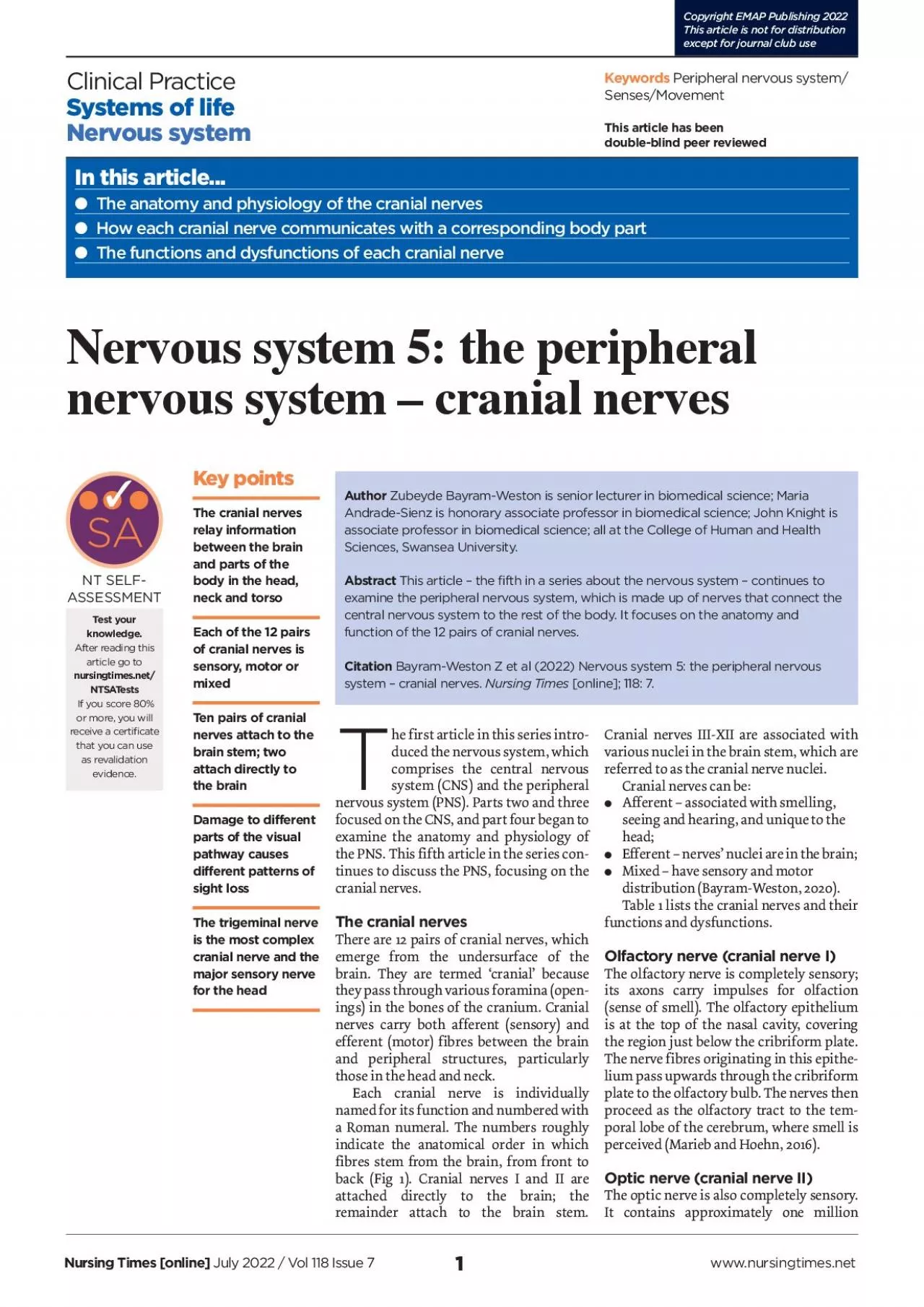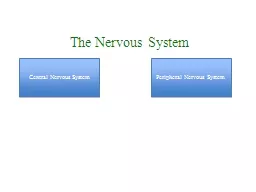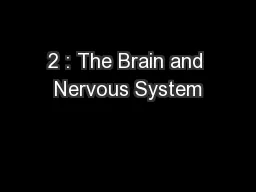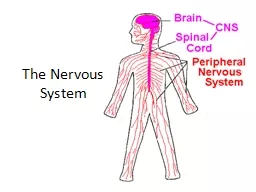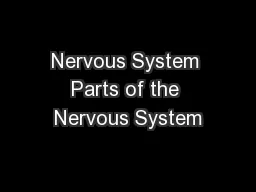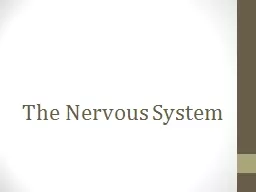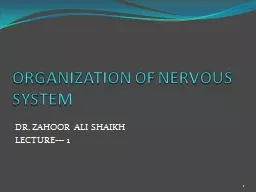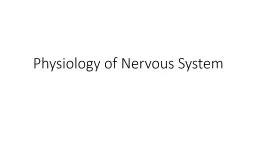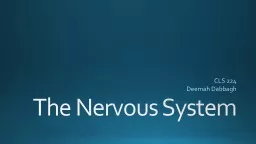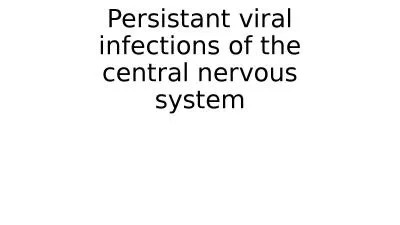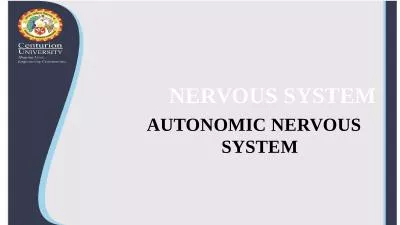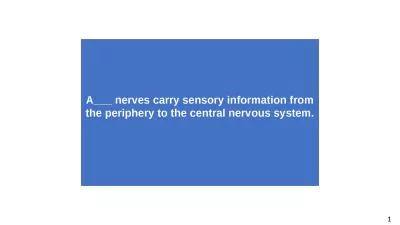PDF-duced the nervous system which comprises the central nervous system
Author : adah | Published Date : 2022-08-25
1 Key points The cranial nerves relay information between the brain and parts of the body in the head neck and torsoEach of the 12 pairs of cranial nerves is sensory
Presentation Embed Code
Download Presentation
Download Presentation The PPT/PDF document "duced the nervous system which comprises..." is the property of its rightful owner. Permission is granted to download and print the materials on this website for personal, non-commercial use only, and to display it on your personal computer provided you do not modify the materials and that you retain all copyright notices contained in the materials. By downloading content from our website, you accept the terms of this agreement.
duced the nervous system which comprises the central nervous system: Transcript
Download Rules Of Document
"duced the nervous system which comprises the central nervous system"The content belongs to its owner. You may download and print it for personal use, without modification, and keep all copyright notices. By downloading, you agree to these terms.
Related Documents

